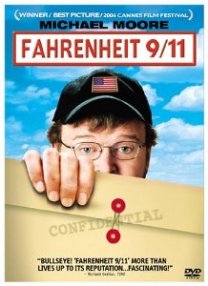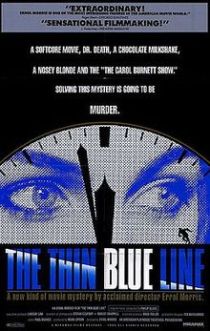I think it’s safe to say that Disney is the gold standard for animated movies these days. From “Snow White” in 1937 through “Monster’s University” in 2013, Disney (via its parent company PIXAR), Disney has been delighting kids and adults for decades. And yet, there are still some Disney movies that seem to get overlooked. For this week’s blog post I have put together a list of ten Disney movies you probably have not seen but should. Now, I have not included any PIXAR movies because that’s a topic for another day. Whether you’re a kid or an adult who’s a kid at heart, here are a few animated titles worth checking out.
10. The Rescuers (1977)
“The Rescuers” tells the story of two mice named Bernard and Bianca. They are members of an organization of mice called the Rescue Aid Society. Together they set off on a journey to rescue an orphaned girl who is being exploited by an unscroupulous treasure hunter. It turns out the girl is in Devil’s Bayou. The story is simple but very enjoyable. The movie also has a few good songs and colorful supporting characters along the way.
9. The Black Cauldron (1985)
Here’s one for those of you that like Disney and have a penchant for dungeons and dragons. “The Black Cauldron” is about a young boy and a ragtag group of friends who set out on a quest to find a black cauldron. The cauldron is said to be the embodiment of evil. The group must find it before a tyrant can. If he finds it first he will become even more evil. Disney does a lot of retelling of classic tales and myths. The animation is beautiful as always, especially the scenes of magic where they fill the screen with detailed images of smoke and fire. And, as a bonus: the movie has a character that is a psychic pig.
8. The Emperor’s New Groove (2000)
“The Emperor’s New Groove” is one of the most original Disney movies in terms of story. In the movie, a vain emperor wants to build a water park in his kingdom just for himself on his birthday. Unfortunately, it will destroy one of the villages in his kingdom. The plot twist comes early on when he is poisoned by an administrator whom he recently fired. However, the administrator botches the assassination attempt and the emperor is turned in a llama rather than killed. The emperor then teams up with a llama herder to straighten things out. But the herder will only do this if the emperor promises to move the location of the water park (he lives in the villages that would be destroyed by it). Disney movies always have a lot of humor in them but this is one of the funniest.
7. Hercules (1997)
Part of the reason I love “Hercules” is that I’m a sucker for Greek mythology. Besides telling the story of Hercules, one of the most famous myths, this movie has some really good songs and great celebrity voices for the characters. My favorite is James Woods who has a lot of fun doing the voice of Hades. The story is straightforward enough. Hercules, the son of Zeus, is stripped of his powers as a child. In order the regain them he must become a true hero. There are some great songs along the way, including “Go the Distance” and “I Won’t Say I’m in Love.” This is a great way to introduce people to Greek mythology and enjoy the magic of Disney.
6. 101 Dalmatians
I will freely admit to being more of a cat person, but dogs are cool too. And “101 Dalmations” is a delight! In the movie a litter of dalmatian puppies are stolen by the evil Cruella de Vil. She wants the puppies for their fur so she can make a coat. The parents of the puppies set out to rescue them. The dogs have lots of interesting adventures along the way and there are genuinely tense scenes of the dogs attempting to escape. In one of my favorite scenes the parents enlist the help of the “twilight bark.” It’s kind of MORSE code for dogs to help other dogs. This movie is fun and funny. It also has one of the best villain songs in Disney history.
5. The Great Mouse Detective (1986)
“The Great Mouse Detective” was one of the first Disney movies I saw as a kid. Decades later I still love it and can’t understand why it hasn’t found a wider audience. As always the animation is sharp. The music here is done by the great Henry Mancini. There are some great songs, especially “The World’s Greatest Criminal Mind.” The story tells the story of the mouse version of Sherlock Holmes (he even lives in Sherlock’s house!). He is Basil of Baker Street. He helps a mouse named Olivia find her missing toy maker father. He has been kidnapped by Fidget, a bat who is a henchmen of the evil Ratigan. The villain forces Olivia’s father to make a life-size robot version of the Queen of England (the mouse version of course). Ratigan plans to dispose of the Queen and at a ceremony have the robot Queen abdicate power to him. So Ratigan is one of those classic villains that wants world domination. I love the way this movie introduces us to the basics of Sherlock Holmes in such a creative way, the animation, and the voice over performance by the great Vincent Price as Ratigan. A lot of celebrities just do voice overs for the money. Vincent Price has a lot of fun with this and it comes through with the animation. The climactic scene inside Big Ben is great to look at and thoroughly exciting.
4. Fantasia (1940)
“Fantasia” may seem like an odd choice to some on this list. After all, it is regarded as a classic. But I still don’t feel like it has gotten the appreciation it deserves from the general public. Part of that may have to do with the fact that there really isn’t a story here. It’s Disney animation set to some of classical music’s standards. Some of the pieces include Dance of the Hours, Ave Maria, Rite of Spring, and, most famously, The Sorcerer’s Apprentice. Whenever I get asked to pick my favorite Disney movie this is my selection. “Fantasia” sparked my love of classical music and my appreciation for the artistry of Disney. “The Sorcerer’s Apprentice” sequence with Mickey Mouse is one of my favorite scenes in the history of cinema. Then there’s that wonderful sequence showing the extinction of the dinosaurs set to Rite of Spring. “Fantasia” introduces you to great animation and some of the greatest classical music. It’s really worth a look!
3. The Hunchback of Notre Dame (1996)
“The Hunchback of Notre Dame” fell through the cracks I think partially because it’s one of Disney’s darker movies. That’s really a shame because it’s one of the richest Disney movies in terms of animation style. Just look at how the animators vividly create Notre Dame Cathedral. The story is based on Victor Hugo’s classic novel of the same name It tells the tale of Quasimodo, the odd-looking but gentle bell-ringer of Notre Dame. He lives in the cathedral under the watchful eye of Claude Frollo, the Minister of Justice. Quasimodo yearns to get out of the confines of Notre Dame and see what’s on the outside. There he meets and befriends the gypsy Esmerelda. Frollo wants to rid Paris of the gypsies and Quasimodo wants to save Esmerelda. Tolerance is the central theme of this movie and its done in a way that seems real and not manipulative. The score was done by the great Alan Menken (if you don’t know that name you should turn in your Disney viewing card) and the lyrics are by Stephen Schwartz (you may be familiar with his work for a little musical called “Wicked”). Some of the musical highlights include “Bells of Notre Dame,” “Out There,” and “God Help the Outcasts.” This is a beautiful film that deserves more recognition.
2. Mulan
Most young women want to be Cinderella, Snow White, or Sleeping Beauty. I’d rather be Mulan. “Mulan” is about a Chinese girl named Mulan who disguises herself as a young man to take her father’s place in the Chinese army when the Huns attack and the country’s men are drafted into service. Mulan’s father is old and frail and she doesn’t want to see him die in battle. The girl pretending to be a man leads to some pretty effective comic scenes. Along the way Mulan is aided by a dragon named Mushu (voiced by Eddie Murphy). What really sets the movie apart aside from the animation is the music and the themes in the story. Mulan is a very relatable character. She’s an outcast who has trouble living up to the expectations of her family and she doesn’t fit in with China’s definition of femininity. It’s great that Mushu is an outcast too and the two of them are both out on a quest for redemption. In addition to all this there’s music by the great Jerry Goldsmith. My favorite song in the movie is “Reflection.” It’s one of the most heartbreaking and honest songs in any Disney movie. If you need inspiration put that song on your iPod. Mulan is inspiring and a lot of fun.
1. Atlantis: the Lost Empire (2001)/Titan, A.E. (2000)
I’m kind of cheating here at the end. But the reason I have these movies in a tie is because I think they were overlooked for the same reasons. They were both Disney movies without song and dance numbers, they were straight up science fiction films, and the visuals were radical departures for Disney.
“Atlantis: the Lost Empire” is about a young adventurer named Milo Thatch. His mission in life is to find the lost city of Atlantis. He is approached by an eccentric millionaire who has a team all put together to do just that. Milo sets out on a hi-tech submarine (likely an homage to the Disney live-Action classic “20,000 Leagues Under the Sea) to find Atlantis. Milo and his crew do find it, but then Milo finds out one of the crew members in it only for the money and would rather wipe out Atlantis and its people so he can get rich. The visuals in “Atlantis” are the closest Disney has come to Japanese anime. The look of the film was inspired largely by Mike Mignola, the comic book artist behind Hellboy. The result is a visual striking masterpiece. It’s one of the most exciting Disney movies to be sure.
The best way to describe “Titan, A.E.” is that it’s Disney animation meets the Joss Whedon series “Firefly.” The movie is set in 3028. Earth is under attack by an alien race called the Drej. The Drej destroy Earth with an energy beam just as Earth is evacuating the last of mankind. After Earth is destroyed, humans are exiled to space and submitted to ridicule and exploitation by other alien races throughout the galaxy. It turns out that one of the survivors named Cale carries a ring that will lead him to a ship named Titan which contains a device that will create a new Earth where humanity can unite and thrive again. The Drej set out to find the Titan first to prevent humans from becoming a powerful race again. “Titan, A.E.” is a red-blooded adventure movie and a great science fiction movie. It’s done with a lot of style and wit. Give this one a chance. You won’t regret it!
That’s my list. What Disney movies do you think are underrated? Go to the comment section and discuss!




